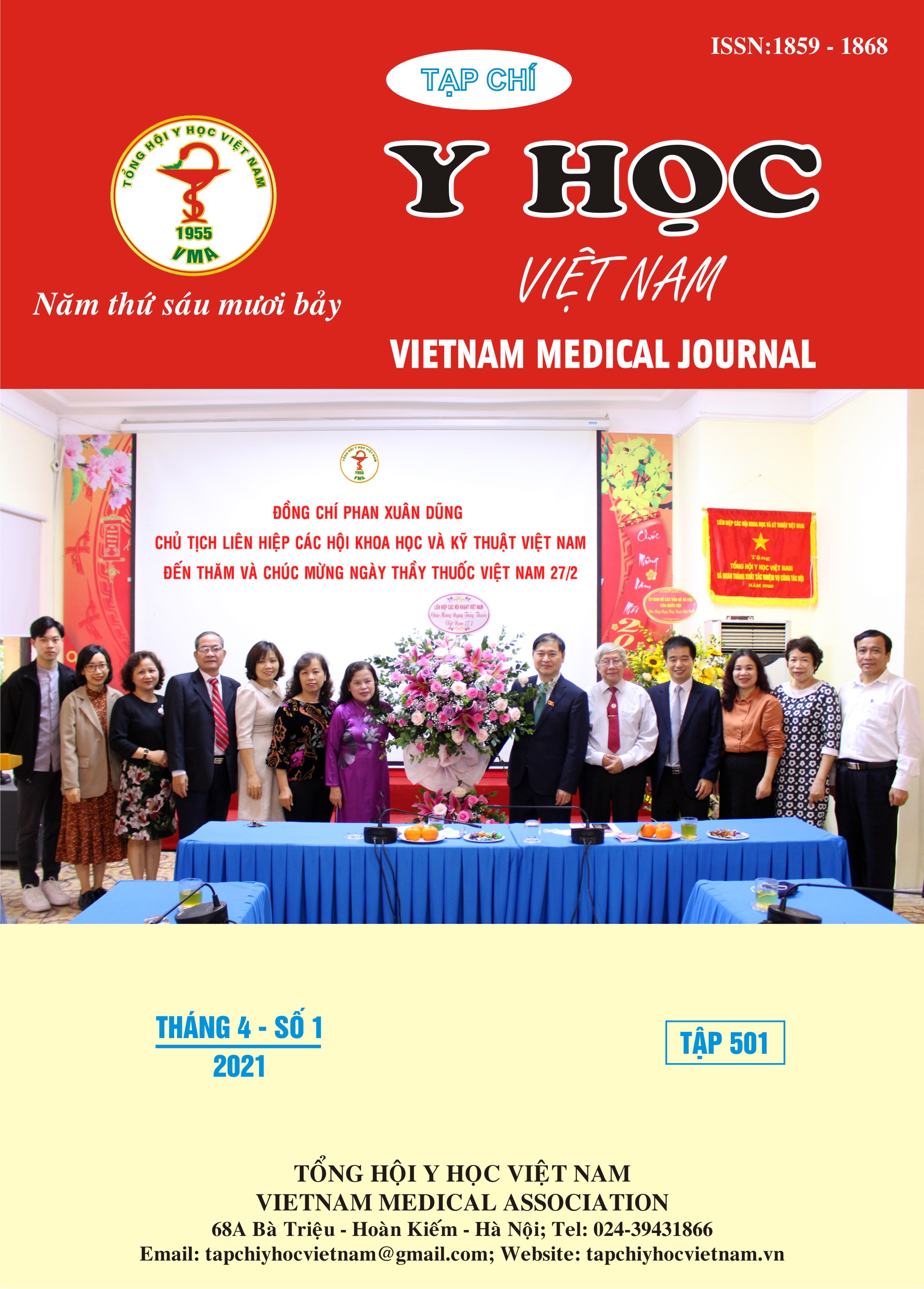EVALUATION THE THICKNESS OF ANTERIOR FACIAL GINGIVA AND ALVEOLAR BONE PLATE ON CBCT IMAGES
Main Article Content
Abstract
Objectives: Tomeasure the thickness of facial bone wall and facial gingiva at teeth in the anterior maxilla based on CBCT of 100 patients. Methods:this descriptive cross-sectional study was realized on 100 CBCT fulfilling all inclusion criteria. The thickness of facial bone wall at teeth in the anterior maxilla was measured in the sagittal sectionat 1mm from crestal level (point A), 3mm from crestal level (point B), 5mm from crestal level and at the apex. The thickness of facial gingival was measuredonly at point A. Results: the thickness of facial bone wall (in mm) of central incisor: at point A is 0,76 ± 0,24, at point B is 0,69 ± 0,23, at point C is 0,60 ± 0,24, at the apex is 1,63 ± 0,93; of lateral incisor: at point A is 0,79 ± 0,29, at point B is 0,61 ± 0,44, at point C is 0,27 ± 0,31, at the apex is 1,77 ± 0,94; of canine: at point A is 0,83 ± 0,39, at point B is 0,71 ± 0,46, at point C is 0,42 ± 0,34, at the apex is 1,60 ± 0,79. The thickness of facial gingiva at point A: of central incisor is 0,76 ± 0,19; of lateral incisor is 0,59 ± 0,19; of canine is 0,53 ± 0,19. Conclusion: most of the patients present the facial bone plate and facial gingiva inferior of 1mm.
Article Details
Keywords
Facial bone plate, facial gingiva, CBCT
References
2. Nowzari H., Molayem S., Chiu C. H. K., Rich S.K. (2012), "Cone beam computedtomographic measurement of maxillary central incisors to determine prevalence of facialalveolar bone width ≥2 mm", Clinical implant dentistry and related research, 14(4),pp.595-602.
3. Januário A. L., Duarte W. R., Barriviera M., Mesti J. C., Araujo M. G., et al. (2011), "Dimension of the facial bone wall in the anterior maxilla: a cone-beam computedtomography study", Clin Oral Implants Res, 22(10), pp.1168-1171.
4. Ghassemian M., Nowzari H., Lajolo C., Verdugo F., Pirronti T., et al. (2012), "Thethickness of facial alveolar bone overlying healthy maxillary anterior teeth", J Periodontol,83(2), pp.187-197.
5. Januario A. L., Barriviera M., Duarte W. R. (2008), "Soft tissue cone-beam computed tomography: a novel method for the measurement of gingival tissue and the dimensions of the dentogingival unit", J Esthet Restor Dent, 20(6), pp.366-373.
6. Zekry A., Wang R., Chau A. C., Lang N.P. (2012), "Facial alveolar bone wall width –a cone-beam computed tomography study in Asians", Clin Oral Implants Res, 25(2),pp.194-206.
7. Grunder U., Gracis S., Capelli M. (2005), "Influence of the 3-D bone-to- implant relationship on esthetics", Int J Periodontics Restorative Dent, 25(2), pp.113-119.
8. Mandelaris G. A., Vence B. S., Rosenfeld A. L., Forbes D. P. (2013), "A classificationsystem for crestal and radicular dentoalveolar bone phenotypes", Int J PeriodonticsRestorative Dent, 33(3), pp.289-296.


